Contrails
The Federal Aviation Administration (FAA) has established this webpage to provide information to the public on aviation condensation trails (or “contrails” for short).
- How contrails form,
- Research to address persistent contrails,
- Public interest in contrails, and
- Additional resources.
Contrails are created when airplanes fly in cold and humid atmospheric conditions and ice crystals form around the particles emitted from the engine. They predominantly appear as white lines against the blue sky. Contrails tend to be most common and persistent in the sky when there is excess moisture in the atmosphere. Natural daily and seasonal variations of wind and atmospheric pressure cause these humid regions to move in the sky.
Condensation trails (contrails) are ice  crystals formed from the condensation of airplane engine exhaust water vapor onto both naturally occurring particles in the atmosphere and particles emitted from the engine, typically at airplane cruise altitudes. Some contrails develop into longer-lasting, persistent contrails and diffuse into contrail cirrus clouds, which together comprise Aviation Induced Cloudiness (AIC), as depicted in this image. Contrail cirrus formation and persistence depend on the airplane engine exhaust composition, which is impacted by engine technology and fuel chemistry, as well as local atmospheric conditions. In the United States, contrails can form at any time throughout the year; however, they are most likely to form and persist when the atmosphere is cold and humid. Contrails will not form if the air at the aircraft altitude is too warm or too dry. Note that the humidity we experience on the surface of the Earth can differ greatly in comparison with humidity in the upper, colder atmosphere where airplanes fly.
crystals formed from the condensation of airplane engine exhaust water vapor onto both naturally occurring particles in the atmosphere and particles emitted from the engine, typically at airplane cruise altitudes. Some contrails develop into longer-lasting, persistent contrails and diffuse into contrail cirrus clouds, which together comprise Aviation Induced Cloudiness (AIC), as depicted in this image. Contrail cirrus formation and persistence depend on the airplane engine exhaust composition, which is impacted by engine technology and fuel chemistry, as well as local atmospheric conditions. In the United States, contrails can form at any time throughout the year; however, they are most likely to form and persist when the atmosphere is cold and humid. Contrails will not form if the air at the aircraft altitude is too warm or too dry. Note that the humidity we experience on the surface of the Earth can differ greatly in comparison with humidity in the upper, colder atmosphere where airplanes fly.

The FAA is working with other government agencies, industry, and academia to share information on the scientific understanding of contrails, and advance research to understand, quantify and mitigate the impacts of persistent contrails.
- Research Needs: The FAA continues to work with other government agencies, providing a data-driven approach to predict, avoid, or mitigate persistent contrail formation. Advanced airplane engine technologies, aviation alternative fuels, and operational re-routing of airplanes may aid in reducing persistent contrails. More research is necessary to improve, advance, and strategically deploy these capabilities across the aviation section in the near-, mid-, and long-term.
- Research Areas: Research generally falls into
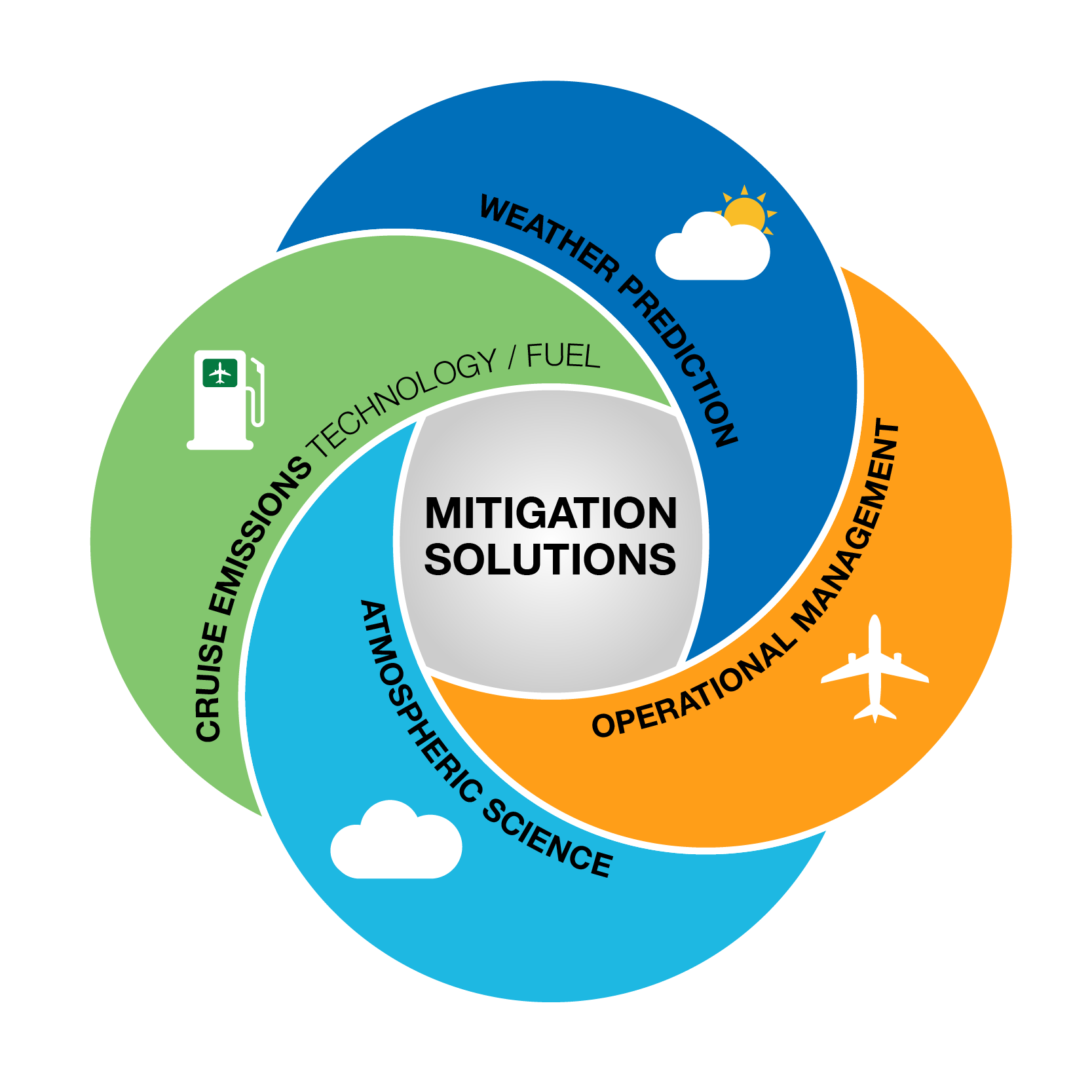 four categories:
four categories:
- Atmospheric Science: Understanding of how aviation emissions evolve and interact within Earth’s atmosphere. Focus is on the chemical and physical mechanisms that lead to the formation of persistent contrails.
- Weather Prediction: Ability to forecast regions of the atmosphere that have conditions ripe for forming persistent contrails. Tracking weather systems and structural aspects to Earth’s atmosphere that contribute to the formation of persistent contrails.
- Cruise Emissions: Fundamental understanding of how advanced engine combustion technologies, aviation alternative fuels, lube oil handling systems, and other non-drop in alternative fuels (e.g., hydrogen) affect airplane emissions and subsequent formation of contrails.
- Operational Management: Ability to make effective and efficient operational decisions impacting the formation and persistence of contrails (e.g. avoiding ice supersaturation regions) that balance economic and societal needs, without compromising safety.
The public may have an interest in contrails due to their frequency, persistence, patterns, colors, or relationship to engine exhaust pollutants. The FAA and the Environmental Protection Agency (EPA) are not aware of any deliberate actions to release harmful chemical or biological agents from airplanes into the atmosphere. The FAA will take appropriate actions to address any substantiated claims.
Frequency and Persistence
Similar to seeing a human’s breath or cloud forming behind a car tailpipe on a cold winter’s day, airplanes create contrails by releasing hot, moist engine exhaust into very cold air. Most contrails quickly dissipate in the atmosphere in a matter of seconds-to-minutes. However, some contrails may persist for hours to days under extremely humid atmospheric conditions. Contrails can form at any time throughout the year; however, they are more likely to form and persist when the atmosphere is cold and humid.
Persistent contrails that last for hours to days can spread and drift along with upper atmospheric winds that can reach as high as hundreds of miles per hour. This means that contrails seen from the ground could have been created by an airplane that is hundreds of miles away, already at its destination. Therefore, it may be challenging, or even impossible to correlate a specific airplane that created a contrail using flight tracking websites.
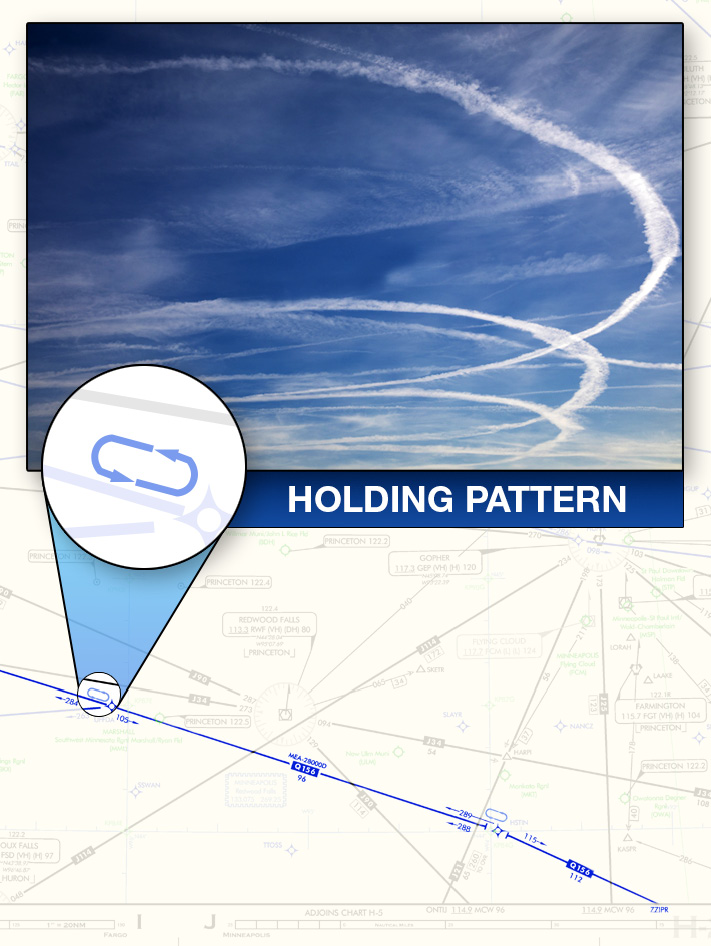
contrail patterns will drift and expand over time due to atmospheric conditions.
Patterns
Contrails initially follow the airplane’s flight path. Sometimes they are in a straight line, such as from a commercial passenger flight. Other times they are circular in appearance based on the airplane’s flight path, such as an airplane flying in a holding pattern. Contrails can also appear to start and stop abruptly. This can occur when an airplane enters or leaves an area of the atmosphere that has extra moisture or crosses an atmospheric weather system front or boundary. These invisible pockets of humid air are known as ice supersaturation regions (ISSR) and may also form natural cirrus clouds without the influence of an airplane. Sometimes natural cirrus clouds form patterns that can be mistaken for older contrails when viewed from the ground or from satellite imagery. Some examples include parallel lines formed by atmospheric gravity waves or mountains as well as line-shaped weather fronts.
Colors
The color of a contrail can appear to change as the sun moves across the sky to various shades of white, gray, red, orange, or yellow. This is due to how light from the sun reflects off the contrail’s ice crystals. The optical effect is similar to how sunlight is reflected by precipitating liquid water droplets that form rainbows.
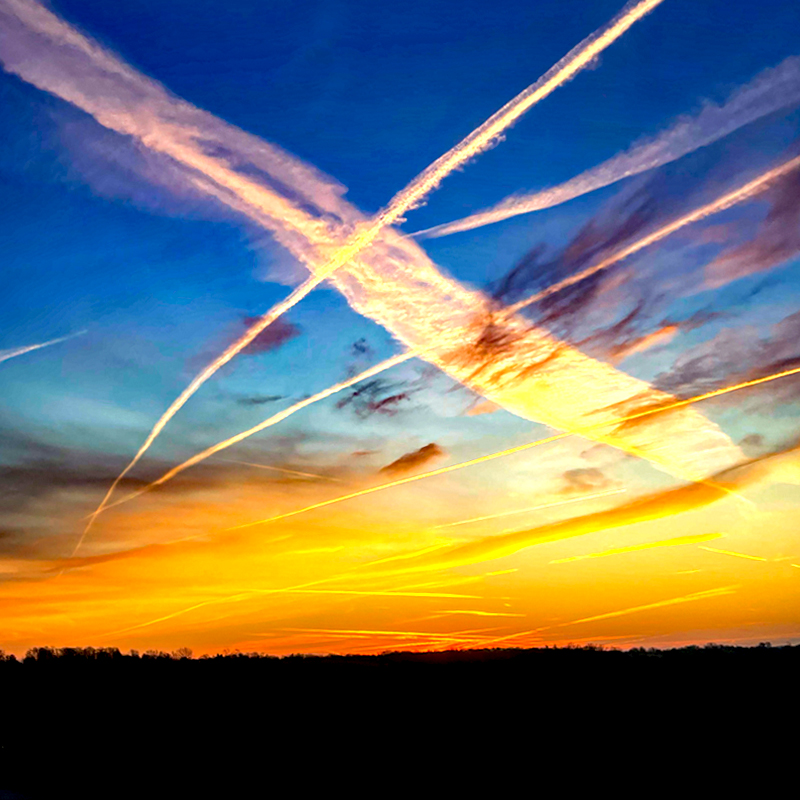
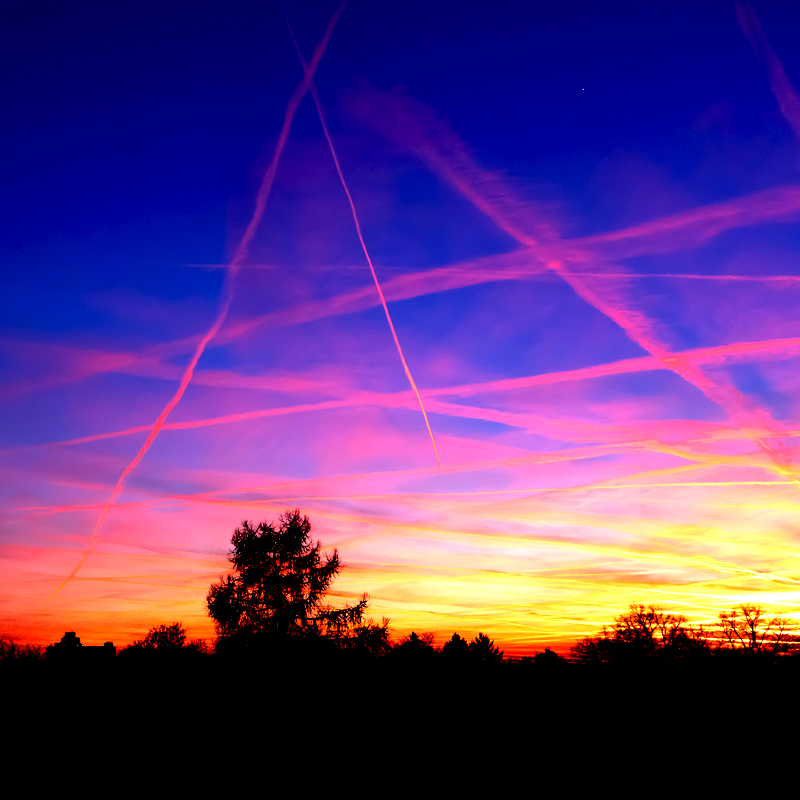
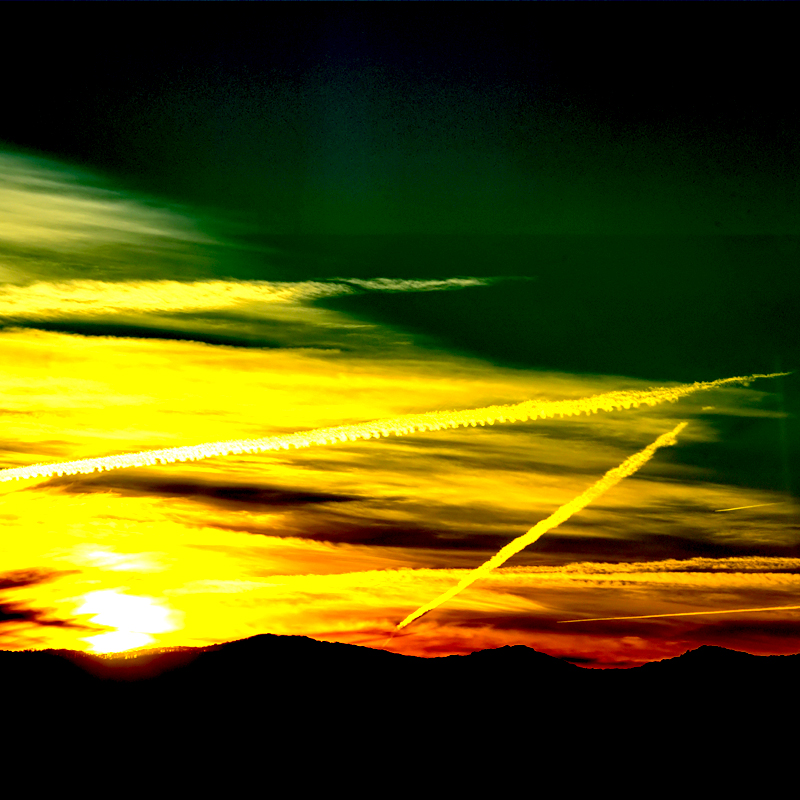
Engine Exhaust Pollutants
Airplane engines produce similar combustion-related emissions as cars and trucks. Airplane engine exhaust is composed of 71% carbon dioxide and 28% water vapor. The exhaust also contains less than 1% of other combustion products such as sulfur oxides (SOx), nitrogen oxides (NOx), carbon monoxide (CO), unburned hydrocarbons (HCs), and particulate matter (PM – aka soot particles). As the hot exhaust plume cools, water vapor released in the engine exhaust condenses onto these fine particles (either existing in the atmosphere or from the engine exhaust) which grow and freeze to form the ice crystals visible as contrails. Jet fuel does not contain metal-based compounds, because any dissolved metals in jet fuel would adversely affect engine stability, causing a major safety concern.
combustion-related emissions as cars and trucks. Airplane engine exhaust is composed of 71% carbon dioxide and 28% water vapor. The exhaust also contains less than 1% of other combustion products such as sulfur oxides (SOx), nitrogen oxides (NOx), carbon monoxide (CO), unburned hydrocarbons (HCs), and particulate matter (PM – aka soot particles). As the hot exhaust plume cools, water vapor released in the engine exhaust condenses onto these fine particles (either existing in the atmosphere or from the engine exhaust) which grow and freeze to form the ice crystals visible as contrails. Jet fuel does not contain metal-based compounds, because any dissolved metals in jet fuel would adversely affect engine stability, causing a major safety concern.
Note, at ground level, engine exhaust pollutants like SOx, NOx, CO, UHC, and soot particles can pose human health concerns. This is why EPA, FAA, and other Federal agencies collaborate on research and standards development to protect the health of our communities.
Intentional Dispersal
The production of contrails should not be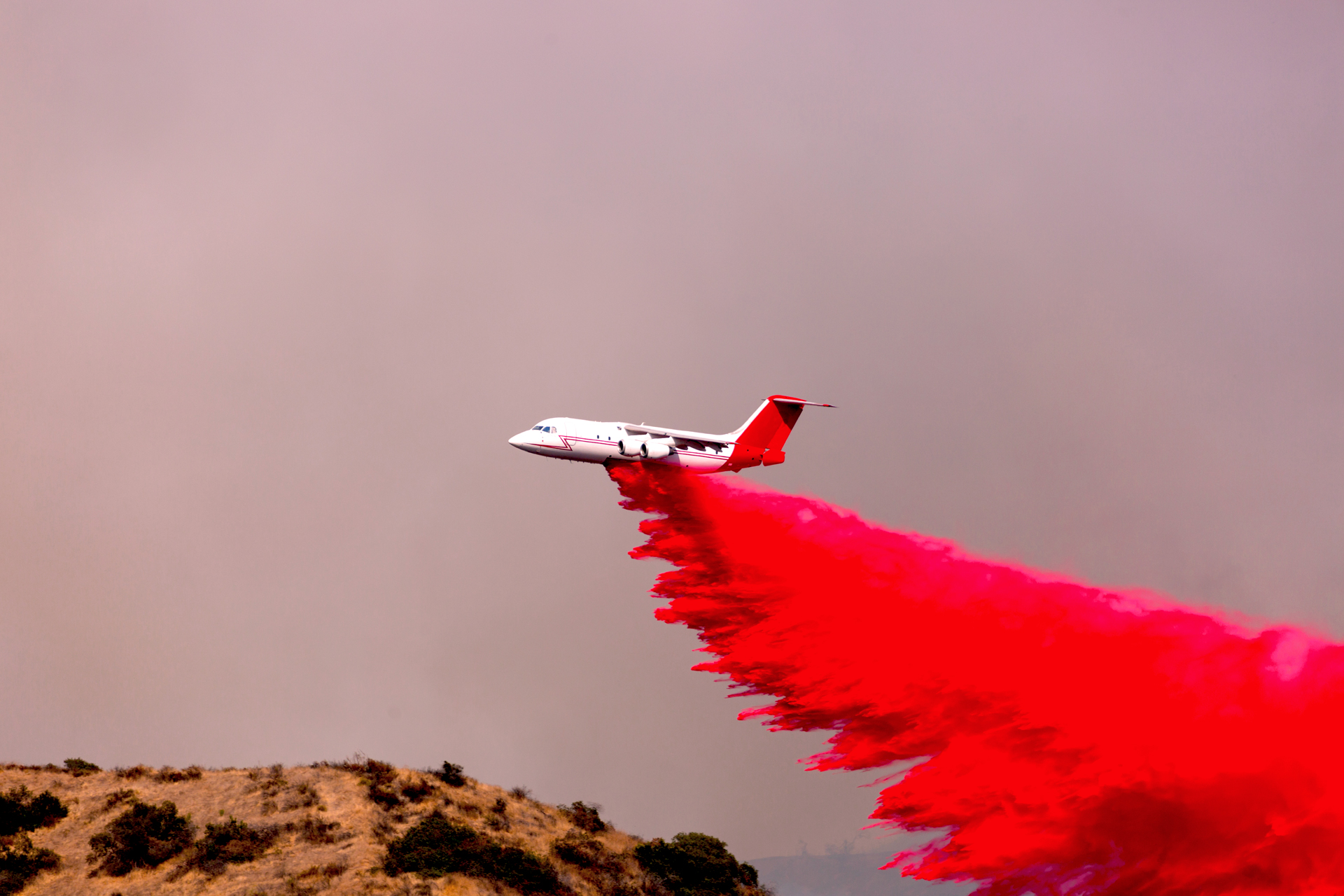 confused with intentional dispersal activities conducted by aircraft. These activities include:
confused with intentional dispersal activities conducted by aircraft. These activities include:
- Agricultural Operations: Aircraft may be used to disperse substances needed for pest control, plant nourishment, soil treatment, or other agricultural products.
- Fire Suppression: Aircraft may be used to disperse fire retardant as part of wildfire suppression efforts.
- GeoEngineering or Weather Modification: This includes any activity that has the intention to artificially change the composition, behavior, or dynamics of the atmosphere on a small-scale, such as ‘cloud-seeding’.
While the FAA retains regulatory authority over the flight parameters of such activities, other Federal agencies may be responsible for regulating the materials to be dispersed. For example, the Environmental Protection Agency (EPA) regulates the use of pesticides in the United States. In addition, any company intending to perform geoengineering or weather modification activities must provide a report to the National Oceanic and Atmospheric Administration (NOAA) at least 10 days prior to the activity taking place.
The FAA is not aware of any contribution by these intentional dispersals to the formation of contrails, and would investigate any substantiated claims of such activities.
- Joint EPA-FAA Contrails Fact Sheet
- FAA
- ASCENT – The Aviation Sustainability Center
- ASCENT 78: Contrail Avoidance Decision Support and Evaluation
- ASCENT 02: Understanding Changes in Aviation Emissions due to SAF with New Combustor Engine Technology
- ASCENT 102: Assessment of Contrail Formation via Combustion of Sustainable Aviation Fuel
- ASCENT – The Aviation Sustainability Center
- EPA
- DOE
- ARPA-E Pre-Trails: Predictive Real-time Emissions Technologies Reducing Aircraft Induced Lines in the Sky
- NASA
- National Academies Report: Developing a Research Agenda on Contrails and their Impacts
- Sustainable Flight National Partnership
- Advanced Air Vehicles Program
- Transformative Aeronautics Concepts Program
- Airspace Operations and Safety Program
- GE Aerospace, NASA collaborate on contrail impact flight tests
- Boeing Eco Demonstrator – SAF Emission Testing partnership with NASA and FAA
- NOAA
- ICAO
- European Union Aviation Safety Agency (EASA)
- Airlines and Manufacturers
- Other
